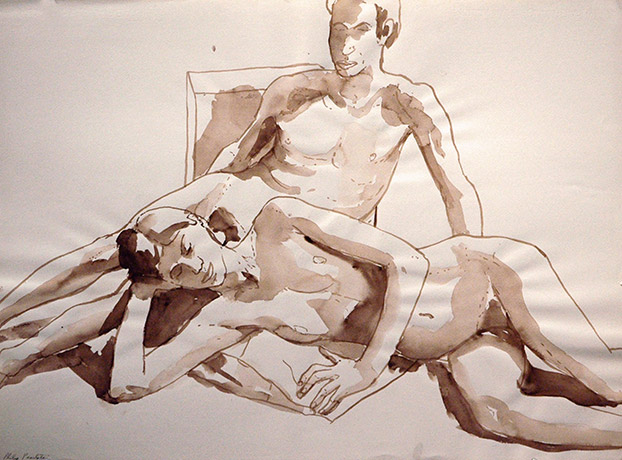An Economy of Specific Bodies and Particular Objects: Philip Pearlstein Drawings
January 07 - March 27, 2005
This exhibition of Philip Pearlstein drawings traces the artist’s sustained engagement with figurative representation for more than fifty years. In contrast to realist art traditions in which perfect bodies are placed in idealized settings, Pearlstein creates carefully composed arrangements of specific bodies and particular objects. He emphasizes the particular over the general, the actual over the archetypal, and flux over fixity.
The artist began his inquiry into the representation of bodies in space in the 1950s, at the height of American abstract expressionism. The ideals of abstract expressionism—a commitment to nonrepresentational art and chiefly improvisational methods—were antithetical to Pearlstein’s very obsession: meticulously recording images from careful observation of life. In a 1962 article in ArtNews, Pearlstein, trained as an art historian, made an impassioned case for realist art. In “Figure Paintings Today Are Not Made In Heaven” the artist advocated painting images the way the eye actually sees them, including optical distortions and perspectival anomalies.
Throughout his career, Pearlstein has methodically arranged and rearranged bodies and objects in shallow, tightly constricted pictorial spaces. This practice produced an economy of images that continue to reveal surprises in the seemingly familiar landscape of our everyday lives.
Born in Pittsburgh, Pearlstein earned his BA in 1949 from the Carnegie Institute of Technology and received his masters in art history in 1955 from the NYU Institute of Fine Arts. For over sixty years, Pearlstein has worked professionally across disciplines: as painter, art historian, graphic artist, teacher, printmaker, and author. He is now Professor Emeritus at Brooklyn College, where he taught from 1963–1987. He lives and works in New York City.
Philip Pearlstein. Leaning Male Model with Legs Outstretched and Reclined Female Model, ca. 1960. Sepia wash on paper. 22 ¼ x 30 inches.
